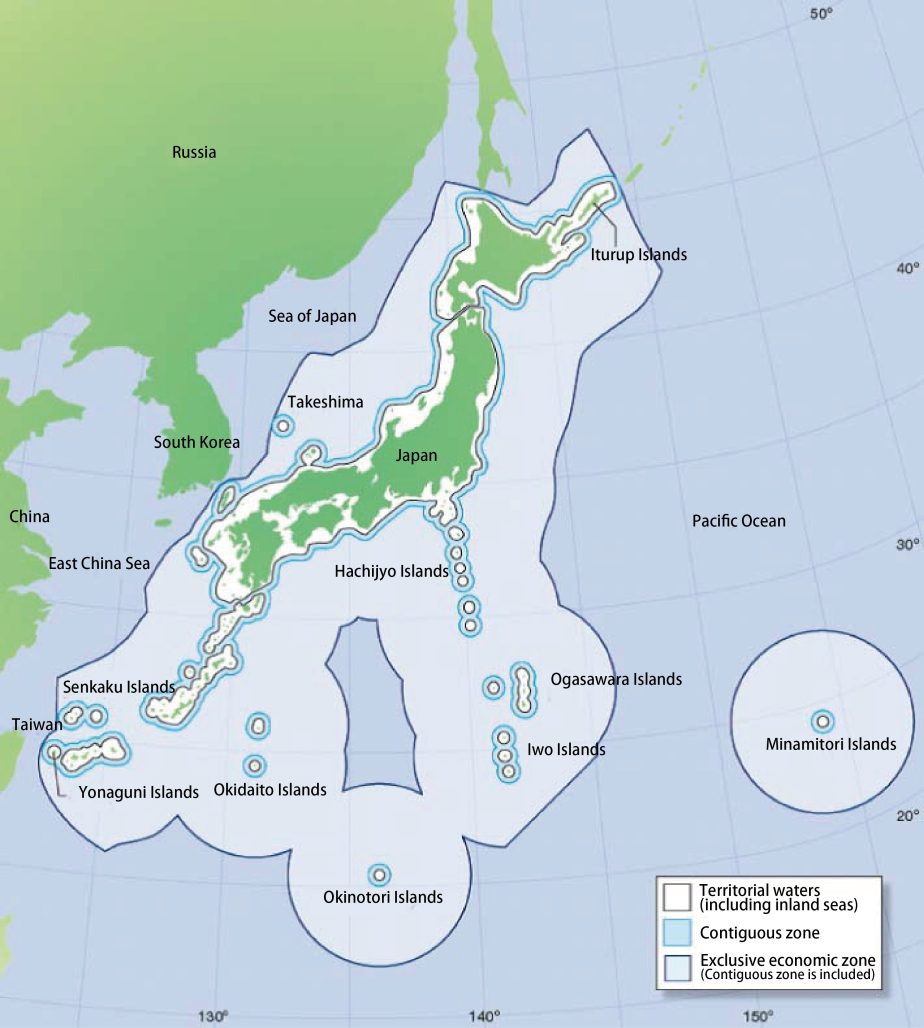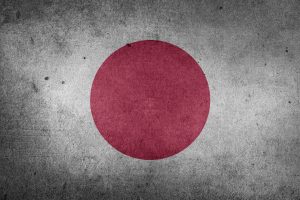On July 5, Japan’s Chief Cabinet Secretary Hayashi acknowledged China’s placement of a small buoy in the Shikoku Basin along Japan’s southern continental shelf and north of Okinotorishima (沖ノ鳥島, also known as Parece Vela). Hayashi also indicated that China did not notify Japan of the buoy’s installment and called the lack of communication “regrettable.”
Okinotorishima, strategically positioned in the Philippine Sea approximately 875 nautical miles southwest of Tokyo, is of territorial importance to Japan. Tokyo asserts Okinotorishima as a historically established island and Japan’s southernmost point. The assertion greatly expands Japan’s continental shelf and Exclusive Economic Zone (EEZ).

Map of Japan’s Maritime interests per Japan’s Office of Policy Planning and Coordination on Territory and Sovereignty.
China and South Korea do not accept this demarcation. Since 2004, China has persistently challenged Okinotorishima as an island, arguing it is a rock and, therefore, not a maritime boundary base point. China has backed its challenge with frequent oceanographic surveys and military exercises in the area without Japan’s consent. Like these activities, Tokyo could perceive the Shikoku Basin buoy as potentially undermining Japan’s maritime interests.
Japan’s acknowledgement of the buoy came after a Yomiuri Shimbun article indicated the Chinese oceanographic ship Xiang Yang Hong 22 had departed Shanghai on June 5, sailed through the Osumi Strait, and then deployed the buoy in mid-June.
In response to Tokyo’s queries about the Shikoku Basin buoy, Beijing indicated that the buoy is for tsunami observation and does not infringe on Japan’s sovereign rights.
If true, China can conduct such oceanographic surveys within the Shikoku Basin in the upper waters of the continental shelf outside the Japanese EEZ without Tokyo’s consent per the United Nations Convention on the Law of the Sea (UNCLOS). However, Beijing cannot utilize the buoy for seabed exploration as this likely violates UNCLOS. Japan’s claims allow it to exercise sovereign rights to explore the seabed and exploit resources in this area.
Japan is currently analyzing the buoy and its installation, but the growing concern is palpable.
Last July, the same Xiang Yang Hong 22 installed a 10-meter-diameter China Ocean Survey Buoy 43 nautical miles northwest of Senkaku’s Uotsuri Island in Japan’s EEZ. Despite Tokyo’s frequent requests for immediate removal, the Senkaku buoy remains. China claims the buoy was initially placed near the Yangtze River estuary and drifted away due to technical failure. Despite the claim of technical failure, Chinese researchers have published at least four academic papers based on the Senkaku buoy’s observation data. Some Japanese are concerned that this research will aid China in establishing jurisdiction over waters around the Senkaku Islands.
The possibility of China installing more buoys in Japan’s EEZ is a potential threat that strengthens the calls for Japanese vigilance and monitoring, underscoring the urgent need for proactive measures.

































